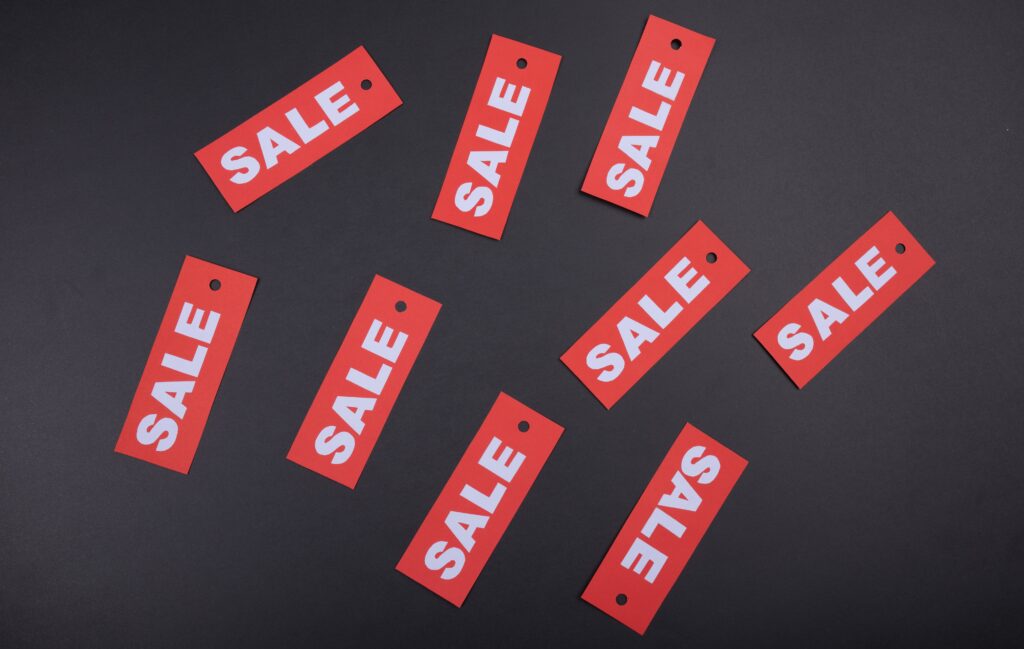Holidays, holidays, holidays! We can’t say it enough.
Who, you may ask, is “we”? It’s both the US consumers and retailers, because the holidays mean shopping sprees, cash tills ringing, and smiles all around (albeit for different reasons for celebrating). However, the word “holidays” is a catchall for several celebrations, from Christmas to Hanukkah, New Years, and more. Newer events have also emerged over recent years, like Black Friday, Small Business Saturday, and Cyber Monday—the focus of this article.
Arguably the most appropriate handle for the trio is “The Price Discount Holidays.”
Black Friday, Small Business Saturday, and Cyber Monday fall squarely into the holiday category that represents lengthy spells that impact the customer experience (CX). It allows us to interact with our favorite brands through highly discounted retail.
On the other side of the divide, merchants must diligently prepare for it, gearing up the virtual channels, piling the shelves with inventory, and jumping on the bandwagon with deals and discounts to consolidate customer brand loyalty. They’re also pretty suspicious of competitor promotions aiming to disrupt markets and churn long-term customers in their direction.
All the above converges on fulfilling meaningful CX touchpoints; otherwise the events would fall flat. Moreover, they cover vital buying incentives to jump revenues and make the year’s business a massive success. Still, there are differences in performance and much more to it than meets the eye, so let’s investigate the three days more carefully.
What is Black Friday?
Black Friday started in 2005 and has been gaining momentum ever since. Thanksgiving falls on the last Thursday of November, and the following morning opens the door to Black Friday (BF)—the single most gigantic retail sales day of the calendar year. As a result, we see a connection here to Thanksgiving and the initiation of holiday parades (i.e., Macy’s in NYC started ninety-eight years ago, and Eaton’s in Toronto, Canada is celebrating a 117th-anniversary event this November 2022). Ironically, Santa pops up prematurely in these extravaganzas, intimating that Black Friday coincides with the opening of the holiday season (Note: no more “days” on the agenda—instead, it’s a season.)
Did you know that the average savings on Black Friday specials in 2021 were around 24%? Black Friday is undoubtedly the pinnacle of a discount-price shopping tsunami—both in-store and online. The deals are often mind-boggling in specific verticals to get shoppers into high gear and ready to splurge. However, the original premise of Black Friday was to create excitement around in-store customer experiences. Macy’s, Kohl, Target, and other physical outlet giants led the charge. With how things came together, Cyber Monday (CF) would eventually take over the baton by providing a platform capable of catering to the millions of consumers who prefer a virtual buying experience.
What is Cyber Monday (CM)?
CM doesn’t have the long history of Black Friday, but the initiators packaged the concept neatly. Ellen Davis of the National Retail Federation and Scott Silverman labeled the shopping event “Cyber Monday,” designed to slip in as the virtual shopper’s “Black Friday”—except three days later (i.e., on Monday). They launched it with great fanfare, and things sounded great. However, keep in mind that virtual buying was not as common at the time, and still somewhat in the physical store retailing shadow. In short, the agreed storyline was that shoppers rely on Black Friday for physical sales, and Cyber Monday is its equivalent for virtual transactions.
On the contrary, things have changed dramatically now, as we’ll see below.
Is there a real difference between Black Friday and Cyber Monday in 2022?
So that’s the million-dollar question, and the answer is not all that complicated.
Indeed, Cyber Monday merchants don’t always have physical stores, making the day all about ECommerce and only ECommerce. However, digital buying is also an enormous part of Black Friday. Indeed, there’s nothing one can’t acquire online on Black Friday at deep discounts, which comes as a surprise on Cyber Monday.
Frankly, the current logic behind these so-called holidays is blurry at best. Consider the following:
- 80 million Americans shopped online on Black Friday 2021 (versus 66.5 million shopping in-store), and economic experts expect the gap to widen significantly in 2022.
- Mobile devices account for approximately 43% of Black Friday sales. Retailers reliably report mobile app deployment on Black Friday going through the roof and online activity (versus any other Friday during the year) jet-propelled at 6 times the velocity.
- Amazon—the country’s primary ECommerce entity—accounted for 17.7% of all Black Friday sales (again, expected to climb substantially in 2022).
Since COVID-19, physical business has effectively merged with ECommerce, springing off the mega-shift to online buying during the pandemic. Thus, Black Friday shoppers are more likely to shop online than in-store. ECommerce retailers (as a specific segment) indicate that average day transactions pale by comparison as revenues generally leap by 2.5 times. Moreover, a power driver on Black Friday (and Cyber Monday) is free shipping—an online-centric benefit.
As I see it, Cyber Monday is today nothing more than a marketing extension of Black Friday. Cyber Monday fits the picture on the fifth day of the Thanksgiving seasonal retail kick-off, pushing the mood into the weekend and beyond. That’s all there is to it. The psychology behind it is to get the public into an early seasonal shopping mood, not for a few hours (like a flash sale) but longer with sustainable momentum. Black Friday seems to energize consumers’ motivations, leading to Cyber Monday three days later, where the cash take escalates by nearly 400%. So, it removes much of Cyber Monday’s reason for being, except that both days more than pay their way.
Thus, the way things are going, they feed off one another. Indeed, it’s inextricably connected to Cyber Monday, resulting in an extended multi-day shopping event in both customers’ and the retailing community’s favor.
Black Friday, Cyber Monday, and Inflation
Most crucially, the mood is ripe for blast-off seasonal buying in 2022. Why? Because with inflation, consumers feel the pinch—big time. Food prices, gas, and every consumable category are on the price-escalation chopping block. So, people are holding back in anticipation of BF and CB putting sizable savings in their pockets. It starts the minute the Macy’s Parade hits the road. So, it doesn’t really matter which day comes first—Black Friday or Cyber Monday—because everyone is in for the five-day haul and not ready to come up for air until the promotions and buying carts signal the end of the holiday deals.
An estimated 140 million Americans plan to drop around $51 billion this year between Black Friday and Cyber Monday, parting with an average of $362 per shopper, generated primarily by Gen Z and Y shoppers piling on while Baby Boomers weigh in on the momentum.
What is Small Business Saturday (SBS)?
I’m sure you’ve guessed by now. It’s the flavorful filling between Cyber Monday and Black Friday. The relatively recent retail holiday was created by American Express in 2010 with two goals in mind:
- To keep the shopping trend motoring along over the five days without let-up
- As a call of support for the small business person
The National Retail Federation, claimed that 51 million shoppers participated in Small Business Saturday in 2021. I’m sure there are pockets of consumers responding to the SBS call, but I find it challenging to believe it. Why this skepticism? These numbers undoubtedly merge into the Black Friday/Cyber Monday continuum. Has anyone stopped to think that Small and Medium Businesses (SMBs) participate aggressively in Black Friday and Cyber Monday? Of course they do, and tremendously so. What else do you expect from 33.2 million small businesses? Other than an altruistic undertone, this is just part of the holiday mix. Most of the volume connects to the bookend dates—Black Friday and Cyber Monday overlapping with Small Business Saturday. Whatever revenue jump Small Business Saturday participants experience, they should attribute it to the big plays—not SBS.
Celebrate the Price Discount Holidays with Exceptional CX
The only thing that counts in modern business is customer experience (CX). Any strategy that fails to acknowledge that signature market driver—the key to customer retention and brand loyalty—will fall off the success bandwagon. As primary retailer initiatives, Black Friday and Cyber Monday are in tune with what customers are looking for. Of course, touchpoints within the paradigm may require removal or improvement to optimize CX, but that’s the subject matter of another article. Overall, consumers and marketers are on the same page. As for Small Business Saturday—I’m not so sure. It’s hard to conclude one way or another, as explained above.
Remember, Black Friday shoppers are your regular customers, only they’re beyond the interest stage, ready to spend money. All that’s left to do is outpace competitors by pushing the right touchpoint buttons with convincing emotional triggers. These include limited-time discounts, free shipping, referral coupons, and gifts aligned with a seamless live support window via mobile and web chats. Please take it as a given that shoppers want fast answers to many questions.
If you are a retailer looking to improve your Black Friday, Cyber Monday, or Small Business Saturday program with CX-centric incentives that work, contact Sogolytics—a consultancy company at the cutting edge of holiday retailing and all that it involves.
















